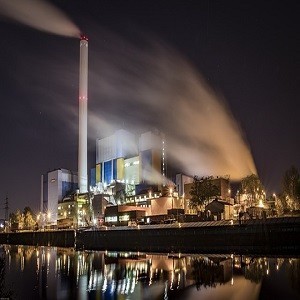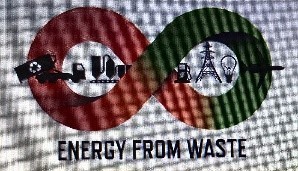Waste Incineration: A friend or a foe to the Circular Economy as a way forward for Covid-19
This is a blog post by Chuma Makasi and Dr. Abeer Hassan (University of West of Scotland) about the potential that Energy from Waste facilities have in improving biodiversity and carbon emissions.
It is well established now that Covid-19 is very strongly linked to the loss of biodiversity that is caused by both businesses and individual human activity. In this short article, we introduce Energy from Waste (EfW) as a process of generating energy in the form of electricity and/or heat from the incineration of waste (Stringfellow, 2014). It could be termed ‘Renewable’ in the sense that waste is always in a constant process of replenishment from human activity. We are suggesting here that EfW is a useful tool in reducing/eliminating the biodiversity loss created by businesses and humans.
At the core of most of the processes that turn waste to energy lies the waste incinerator, which is the main driving force that produces energy from the waste in EfW plants. We believe that EfW is an important component in implementing the Circular Economy.
A Circular Economy is an economic system aimed at eliminating waste and the continual use of resources, this is the simplest definition according to Wikipedia. Because waste elimination is at the core of its objective, waste incineration must be considered as a means of harnessing resources in a Circular Economy.
Attitudes toward waste incineration
It is amazing how waste incineration as a form of waste management has garnered such a bad reputation in the public’s psyche. Perhaps it has a lot of historical antecedents in which it has always been regarded as a very dirty and polluting form of waste management. The truth however, is very far from that because EfW plants are now required to meet the industrial emission standards under the Industrial Emissions Directive (IED) (EC, 2019). Nonetheless, the stigma that persists in the public mind is an unfair perception of a process which is meant to complement and not compete with recycling.
Recycling: The Silver Bullet?
Only metals1 and glass2 have an ‘infinite’ recycle life; this is not the case for other materials like plastic and paper, in contrast to what most people would like to believe. In fact, plastic can only be recycled once or twice at the most before being ‘downcycled’ to a product with a lower quality requirement (National Geographic, 2018). Paper can be recycled anywhere between 4 to 7 times before being downcycled to a lower quality product (Holmes, 2017). This degradation in quality with each recycle cycle represents the diminishing returns inherent in recycling Moreover, paper and plastic if not relatively clean (free of dirt and grease, etc) cannot be recycled.
Public opinion and perception however, seems to favour recycling over EfW; it seems to have lifted recycling to a pedestal much higher than it deserves.
The Future
Instead of seeing EfW as a competitor to recycling, it should be seen as an ally as intended in the waste hierarchy. In fact, without energy recovery from waste, the issue of mitigation of greenhouse gas emission from waste will not be possible; and the question of what you will do with the materials that cannot be recycled, residual wastes, will remain unanswered.
EfW therefore helps reconstruct biodiversity by drastically reducing or totally eliminating the requirement for land use for waste landfilling, instead of using it for tree planting, for example. The environment also benefits greatly by eliminating the emission of methane, which is 25 times more damaging to the environment than carbon dioxide, from would be landfills. Kumar et al (2020) agree that transition to clean, renewable energy and transport will seriously reduce air pollution, greenhouse gas emissions and the impact of future pandemics; EfW is an important contributor towards this goal.
Hence the value of incineration in EfW is in turning waste into a ‘resource’ that generates usable energy and thereby adding value in the chain of the Circular Economy. Germany is a rare example of one which is already leading the pack by having zero waste going to landfill. It has found the balance between recycling and energy recovery from waste; total resource utilization, and this is at the core of what the Circular Economy is all about, turning waste into a resource for the benefit of all.
Blog Published May 2020
Footnotes
1 According to the World Gold Council (2020), ‘The best estimates currently available suggest that around 190,040 tonnes of gold has been mined throughout history, of which around two-thirds has been mined since 1950. And since gold is virtually indestructible, this means that almost all of this metal is still around in one form or another’ and as Prior (2013) reports, ‘All the gold that has been mined throughout history is still in existence in the above-ground stock. That means that if you have a gold watch, some of the gold in that watch could have been mined by the Romans 2,000 years ago’.
2 According to Berg Mill Supply Co. (2017), ‘Glass is infinitely and 100% recyclable! The quality and purity of glass is unaffected during remelting. Unlike some recycled commodities such as plastic, glass does not degrade with successive reuse.’
References:
Berg Mill Supply Co. (2017). Infinitely Recyclable: The Upside Of Glass Recycling. https://bergmill.com/2017/05/09/infinitely-recyclable-upside-glass-recycling
EC (2019). The Industrial Emissions Directive - Environment - European Commission. https://ec.europa.eu/environment/industry/stationary/ied/legislation.htm
Hassan, A., Nandy, M. and Roberts, L. (2020). Does loss of Biodiversity by businesses cause Covid 19? https://www.eauc.org.uk/does_loss_of_biodiversity_by_businesses_cause_c
Holmes, A. (2017). How Many Times Can That Be Recycled? | Earth911.Com. https://earth911.com/business-policy/how-many-times-recycled
Kumar, A., Burston, J. and Karliner, J. (2020). The deadly link between COVID-19 and air pollution, 15th April. The World Economic Forum. https://www.weforum.org/agenda/2020/04/the-deadly-link-between-covid-19-and-air-pollution
National Geographic (2018). 7 Things You Didn’T Know About Plastic (And Recycling). https://blog.nationalgeographic.org/2018/04/04/7-things-you-didnt-know-about-plastic-and-recycling
Prior, E. (2013). How Much Gold Is There In The World? BBC News. https://www.bbc.co.uk/news/magazine-21969100
Stringfellow, T. (2014). An Independent Engineering Evaluation Of Waste-To-Energy Technologies - Renewable Energy World. https://www.renewableenergyworld.com/2014/01/13/an-independent-engineering-evaluation-of-waste-to-energy-technologies/#gref
Vidal, J. (2020). 'Tip Of The Iceberg': Is Our Destruction Of Nature Responsible For Covid-19?. https://www.theguardian.com/environment/2020/mar/18/tip-of-the-iceberg-is-our-destruction-of-nature-responsible-for-covid-19-aoe
World Gold Council (2020). How Much Gold Has Been Mined? | World Gold Council. https://www.gold.org/about-gold/gold-supply/gold-mining/how-much-gold












